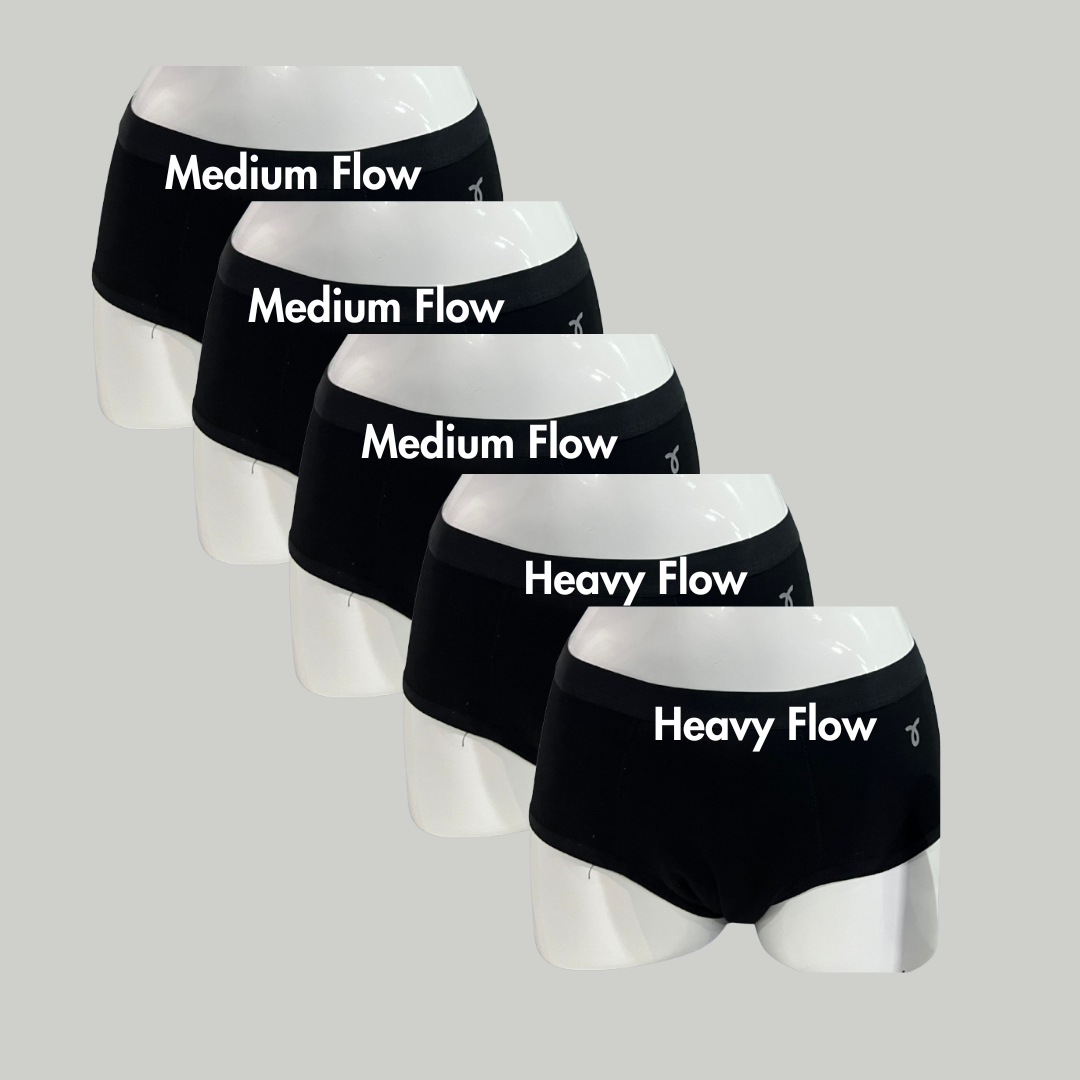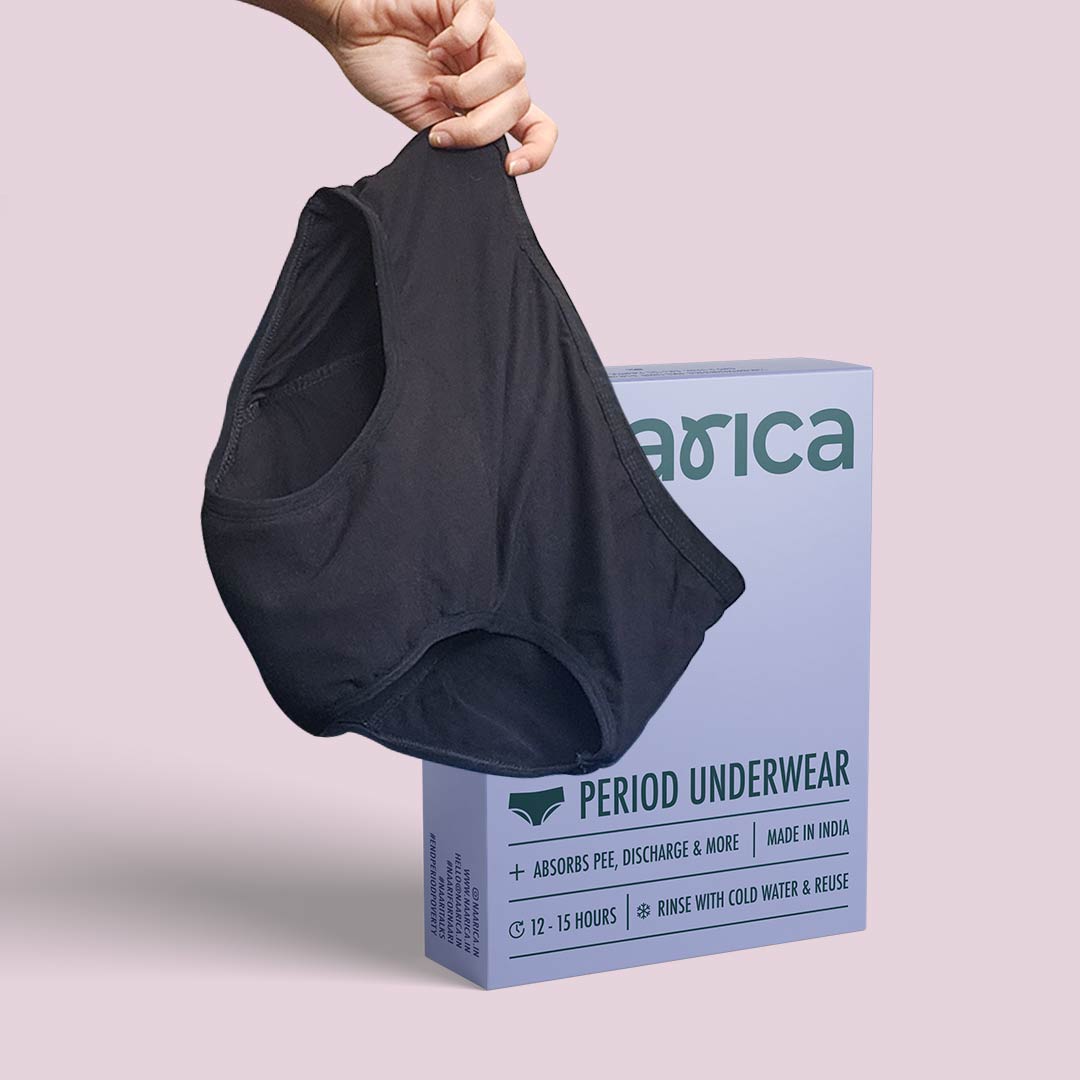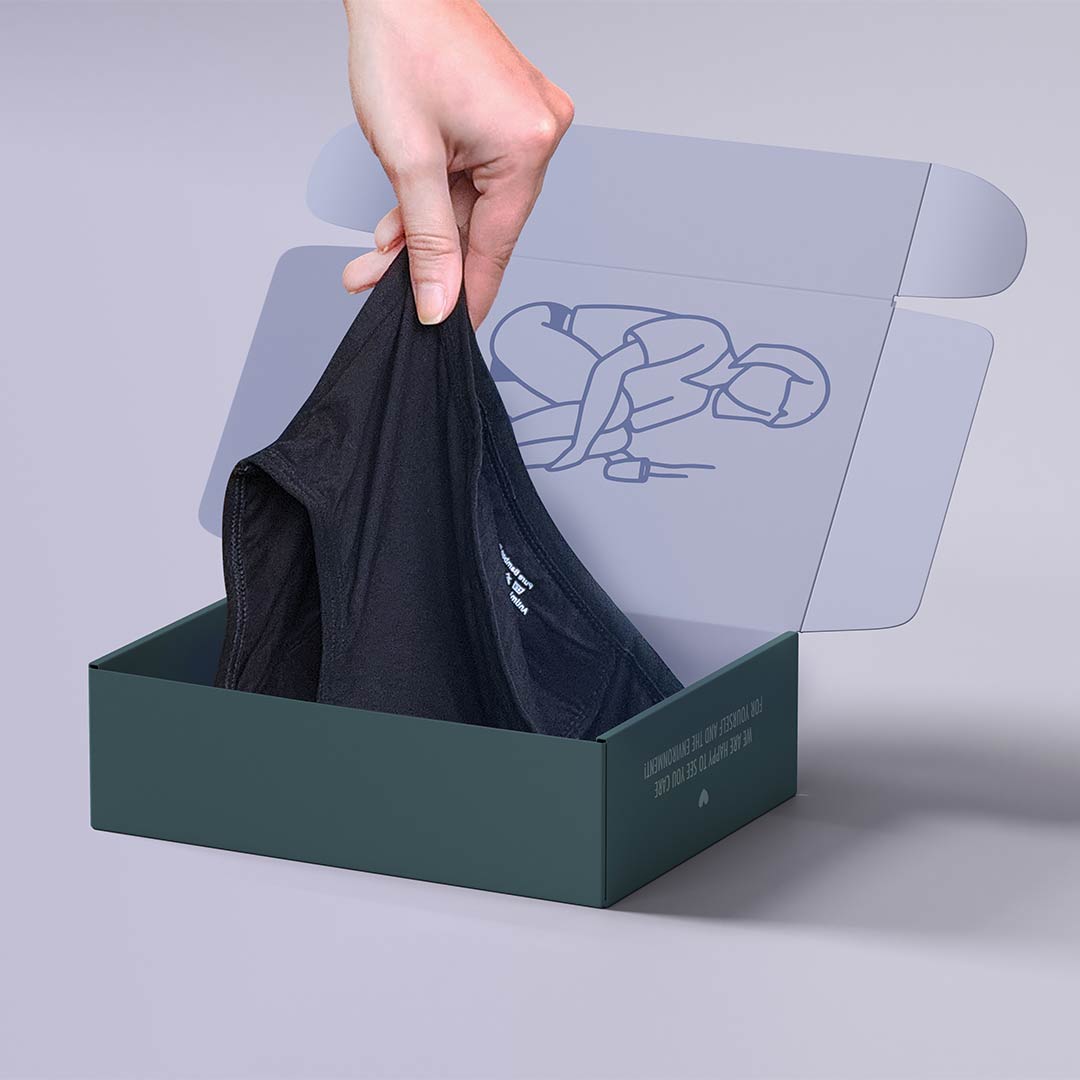According to studies, over the course of her life, a woman experiences around 450 menstrual cycles, from puberty to menopause. That's a lot, but while the average menstrual cycle lasts 28 days, it can vary from one woman to another. Still a taboo subject for many, questions about menstruation and, above all, how long it lasts are still on the minds of some women. Let's lift the veil to bring you all the answers and give you all the tools you need to get to know your body better.
Why know the length of your menstrual cycle?
The length of the menstrual cycle is the time between two successive periods. On average, we know that a cycle lasts 28 days, but in reality it varies from woman to woman. Some women have long cycles of up to 35 days, while others have short cycles of 21 days, for example.
Knowing the length of your menstrual cycles is important, as it gives you a precise idea of your fertility periods for those choosing a natural contraception method, and above all of your sexual health in general. Any irregularity may prompt you to consult a specialist and take the necessary measures.
How is the length of a menstrual cycle calculated?
For many women, calculating the length of their menstrual cycle is a real headache. The cycle begins on the first day of menstruation and ends the day before the first day of the new period. This is how you count the number of days between two periods.
For example, if a woman's period starts on the 2nd day of a month that has 30 days, and the first day of her next period is the 1st day of the following month, her cycle will last 29 days. To avoid getting lost, the trick is to always mark the start date of the cycle on a menstrual calendar or using a mobile app.
The different phases of the menstrual cycle
Each cycle comprises three phases:
The first phase is the follicular phase. It is characterized by the development of follicles in the ovaries. Each follicle contains an oocyte, the female sex cell. This phase begins on the first day of menstruation and lasts until the fourteenth day.
The ovulation phase begins when the follicle expels the only mature oocyte. This egg, now an ovum, leaves the ovary. This phase doesn't even last a minute, but the egg continues to live for 12 to 72 hours, waiting for sperm. Ovulation occurs on the fourteenth day of the cycle for normal 28-day cycles. For shorter or longer cycles, however, it takes 14 days from the end of the cycle.
The luteal or post-ovulatory phase extends from the day of ovulation to the first day of the new cycle (around two weeks). During this phase, the follicle transforms into a corpus luteum, which secretes estrogen and progesterone. If fertilization has taken place, the egg will implant itself in the uterus and continue the pregnancy. Otherwise, the corpus luteum degenerates and abruptly stops producing estrogen and progesterone. This drop in hormone levels causes the uterine mucous membrane to contract, until it detaches and is expelled through the vagina, constituting the new menstrual period. This stage can be the ideal time to adopt <a href="https://naarica.in/collections/smart-period-underwear" title="period panties" data-mce-href="https://naarica.in/collections/smart-period-underwear">period panties</a>, because they adapt to all flows.
What about irregular cycles?
Many women experience irregularities in the length of their menstrual cycle. Indeed, some may experience long periods, while others may experience shorter periods. They may differ from one cycle to the next, or even experience disturbances.
These irregularities can take the form of an unusual delay in menstruation, or conversely, their rapid and abnormal return. It's perfectly normal for periods to be irregular at the very start of puberty, during breast-feeding and at the time of premenopause. Similarly, during pregnancy and after the menopause, periods stop.
Many factors can be the cause of these disorders: fatigue, sleep disorders, stress, medication, heavy consumption of certain substances such as tobacco or alcohol, anorexian, obesity etc.
When should I seek medical advice?
Every woman is different, and so is the length of her menstrual cycle. However, there are some cases where irregular periods should be a cause for concern. When periods are abnormally spaced (more than 6 weeks) or too close together (less than 15 days), it's imperative to consult your gynecologist to find out the causes.
While this is often not a serious problem, irregular cycles accompanied by symptoms such as acne, lower-abdominal pain, painful or heavy periods, can be a sign of endocrine, uterine or breast pathology. In any case, it's always advisable to contact a gynecologist when in doubt. Only he or she can identify the cause of the disturbance and provide the appropriate treatment.
A woman's menstrual cycle and her reproductive life
The female cycle has a major influence on a woman's sexual and reproductive life. The cycle prepares the woman's body for fertilization. Monitoring the cycle via an ovulation calendar is necessary for those who wish to conceive a child or, conversely, those who wish to avoid pregnancy. This avoids the need for random ovulation tests.
Throughout the menstrual cycle, every woman is subject to significant hormonal changes. At each stage of the cycle, the female body produces hormones that influence its behavior and condition. Between headaches, fatigue, stomach aches and weight gain, the cycle is no picnic.
On the sexual front, a woman's libido changes according to the phase of her cycle. It's at its peak during ovulation, and drops off during menstruation. While it's not medically forbidden to have sex during your period, 8 out of 10 women avoid it.







